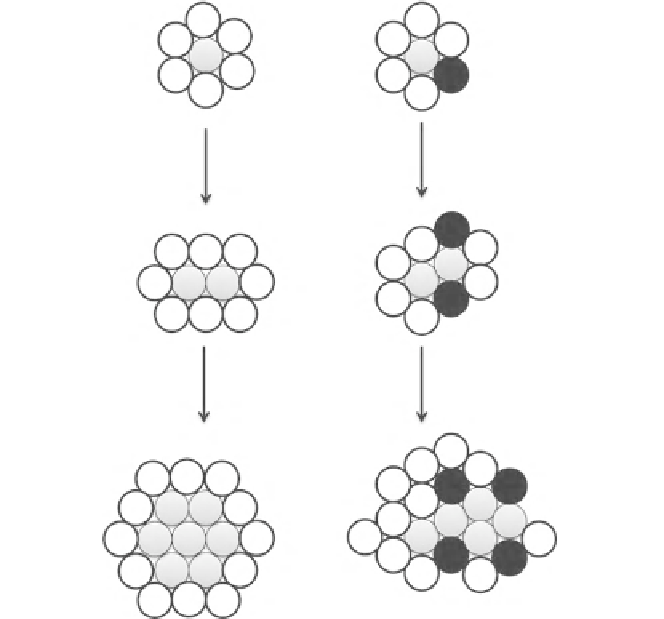Biomedical Engineering Reference
In-Depth Information
Fig. 7.4
A mechanism of growth of PrP aggregates on lipid membranes is schematized here.
Left
panel
the Eden model of growth is presented.
Gray circles
represent bound PrP and
white circles
represent potential growth sites. In the
right panel
, the diagram following the epidemic model
of growth, with
gray circles
representing bound PrP,
white circles
representing potential growth
sites, and
black circles
representing sites of membrane disruption, where growth cannot occur. This
schematic diagram is redrawn from Ref. [
37
]
on the anionic phospholipid content of the membrane. Based on this study, and other
available knowledge, the aggregation mechanism of PrP on membranes has been
explained by classic models of growth (see Fig.
7.4
).
In conclusion, this section has briefly discussed the role of lipids (specifically)
and membranes (generally) in the generation of prion transformations and related
protein misfoldings responsible for various neurodegenerative diseases such as CJD.
The effects due to lipid membranes require thorough studies to elucidate detailed
mechanisms involved at a molecular level. Nonetheless, based on the existing infor-
mation it is clear that membrane effects on PrP form an important area that should
be investigated further to help find a cure for prion related diseases.

Search WWH ::

Custom Search